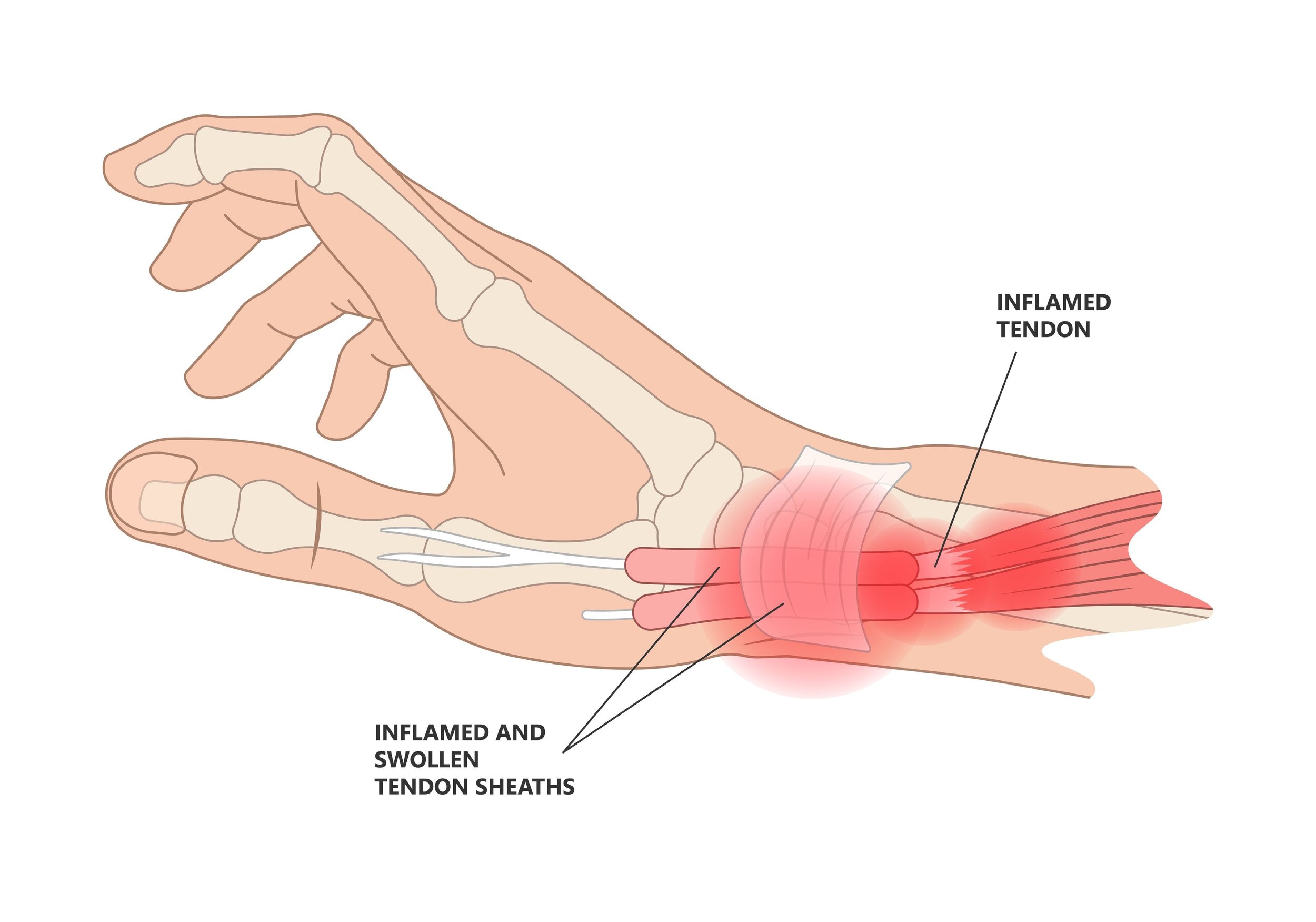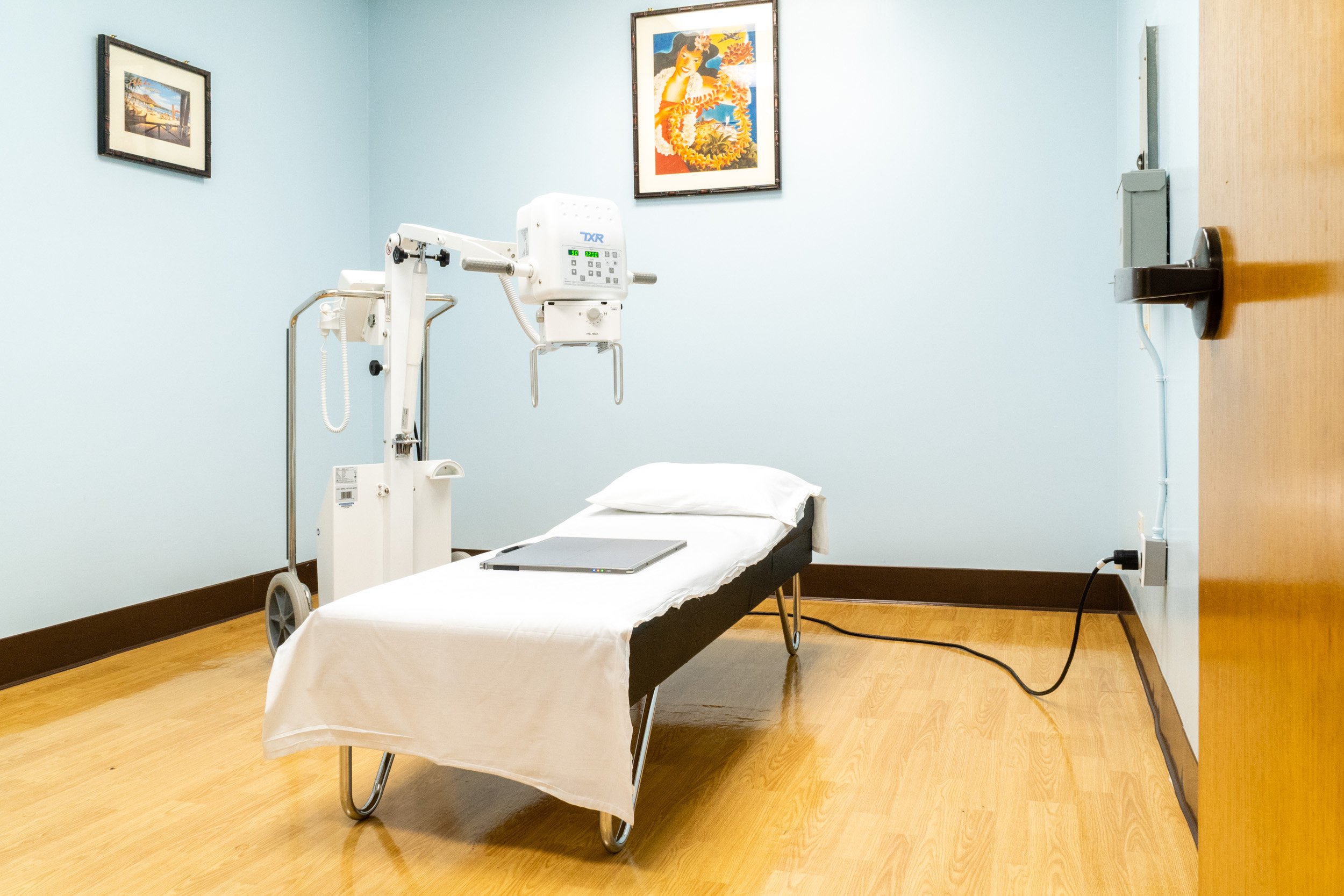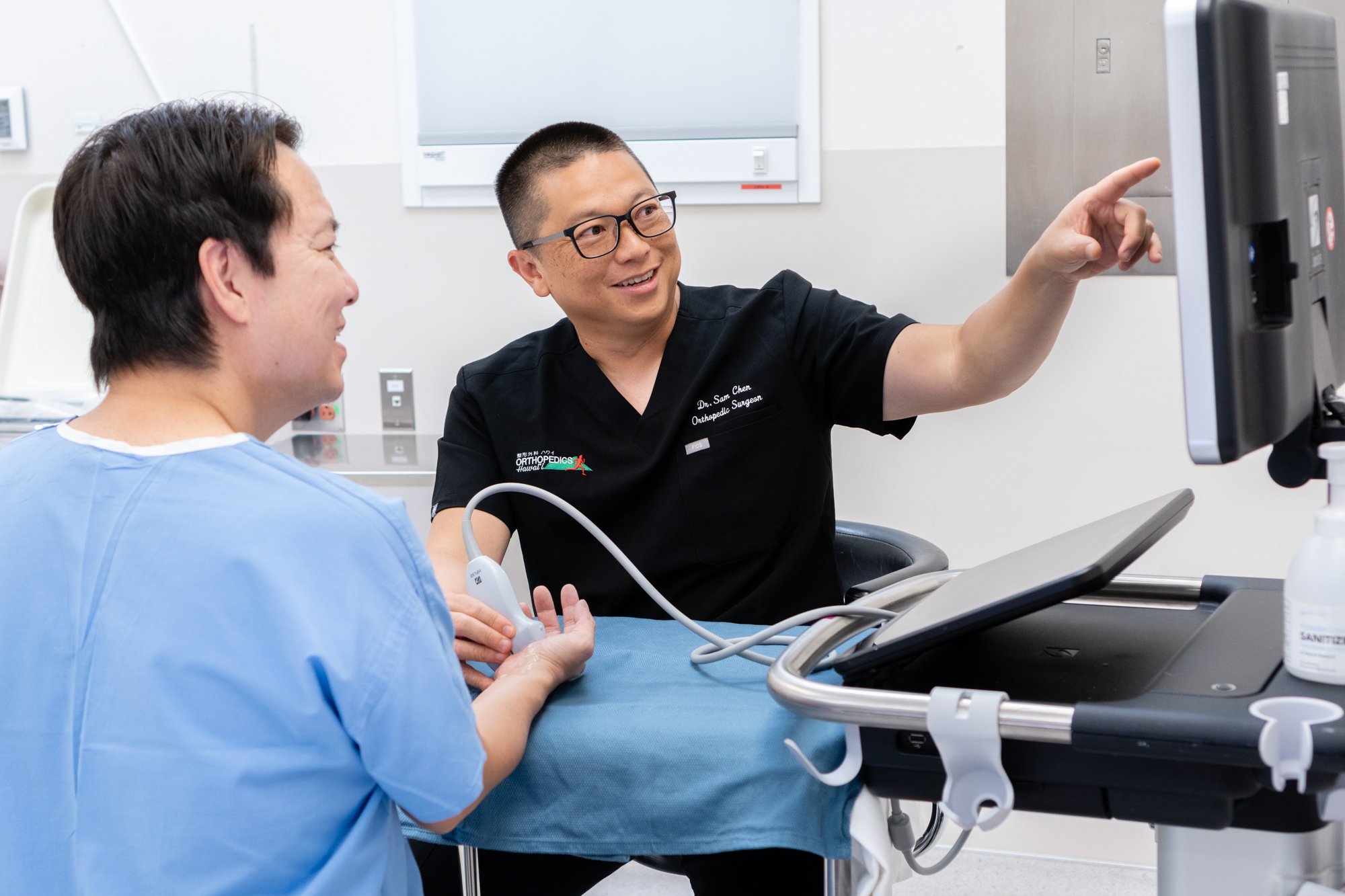Pain at the Base of Thumb? Learn about De Quervain’s Tenosynovitis.
What is de Quervain's tenosynovitis?
De Quervain's tenosynovitis occurs when there is swelling or thickening of the sheath around your thumb tendons. Normally, your tendons smoothly glide through this tunnel sheath. However, swelling can cause severe pain or stiffness with any thumb or wrist movement. Normal tasks such as using scissors can cause disabling pain over the ”thumb side” of the wrist.
At Orthopedics Hawaii we are fully committed to providing tailored treatment options for de Quervain's tenosynovitis. With a strong focus on patient-centric care and the convenience of same-day appointments, we're here to ensure you find expedited relief and reclaim your quality of life.
Symptoms
Identifying the symptoms of this condition early is vital to treatment. These are a handful of commonly reported symptoms of de Quervain's tenosynovitis.
Pain when grasping, twisting, or pinching objects
Swelling near the base of the thumb
Sensation of "catching" during thumb or wrist movements
A snapping or popping feeling in your wrist when you move your thumb
Numbness in the thumb and wrist
Risk Factors
These are some of the risk factors that can increase the likelihood of developing this condition.
Overuse or repetitive activities involving your thumb or wrist
Age (40+)
Gender (more common in women)
Pregnancy
Pre-existing inflammatory conditions (including arthritis)
Diagnosis and Tests
All of our appointments are with an orthopedic surgeon and hand specialist Dr. Sam Chen. Dr. Chen will perform a physical examination including the Finkelstein test to diagnose de Quervain's tenosynovitis.
During the Finkelstein test you will be asked to make a fist with your fingers wrapped over your thumb then move your wrist up and down like you were shaking hands. This position and motion singles out your thumb tendons. If you have de Quervain’s tenosynovitis you’ll likely feel pain during this motion.
We have an in-house digital X-ray machine which Dr. Chen may also use to check your wrist joint for signs of other conditions.
Treatment Plans
Our comprehensive approach at Orthopedics Hawaii encompasses both non-surgical and surgical solutions. We begin with the least invasive plan then progress to more advanced treatment plans if needed.
Non-Surgical Treatment
In our non-surgical treatment plans, our goal is to reduce the inflammation and pain you are experiencing and prevent a recurrence. Typically if a plan is started early your symptoms should improve in 4-6 weeks. If the condition is a result of pregnancy, the symptoms will usually subside at the end of the pregnancy or breastfeeding.
The most common treatments are:
Splint or Brace: Wearing either will immobilize your wrist and thumb by holding them in place which will ease the pressure on your thumb tendons.
Applying Ice: To reduce swelling and relieve pain, wrap ice packs in a thin towel and apply them to your wrist for 20 minutes a few times a day.
Rest: Press pause on playing sports or doing repetitive motions (especially the specific activity that caused the de Quervain’s tenosynovitis). Avoid using your wrist as much as possible.
NSAIDs: Over-the-counter NSAIDs such as ibuprofen (Advil, Motrin IB, others) reduce inflammation and relieve pain. Don’t take NSAIDs for more than 10 days in a row without talking to your provider.
Corticosteroids: A Corticosteroid (prescription anti-inflammatory medications) is injected into your affected tendon sheath.
Exercises & Stretches: Part of your treatment plan may involve exercises that strengthen and increase the flexibility in your wrist. These include gripping a tennis ball lightly for a few minutes followed by a few minutes of rest. If you are able to do so without pain, repeat the exercise with slightly more pressure. Your personalized treatment plan will include how often and how long to perform this exercise.
Surgical Treatment
The majority of patients diagnosed with de Quervain's do not require surgery, however if your symptoms don’t improve Dr. Chen may discuss a surgical treatment.
The outpatient procedure is minimally invasive. A small incision is made in the sheath around your thumb tendons which allow more space for the tendons to move. As a result of the small incision the recovery time for this procedure is relatively swift. Dr. Chen and our staff will thoroughly explain the procedure, recovery time and what to expect on the day of surgery. We will also schedule a follow up appointment to monitor your recovery.
Schedule a Same-Day Orthopedic Visit
Orthopedics Hawaii is your partner in overcoming this condition. Our dedication to patient-centric care, tailored treatment plans, and expedited appointments guarantees a path to relief and restoration. Take control of your hand health, and embark on a journey towards a pain-free future.
Schedule your appointment by calling (808) 744-3360 or emailing aloha@orthopedicshi.com.
Sources:
https://my.clevelandclinic.org/health/diseases/10915-de-quervains-tendinosis



